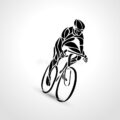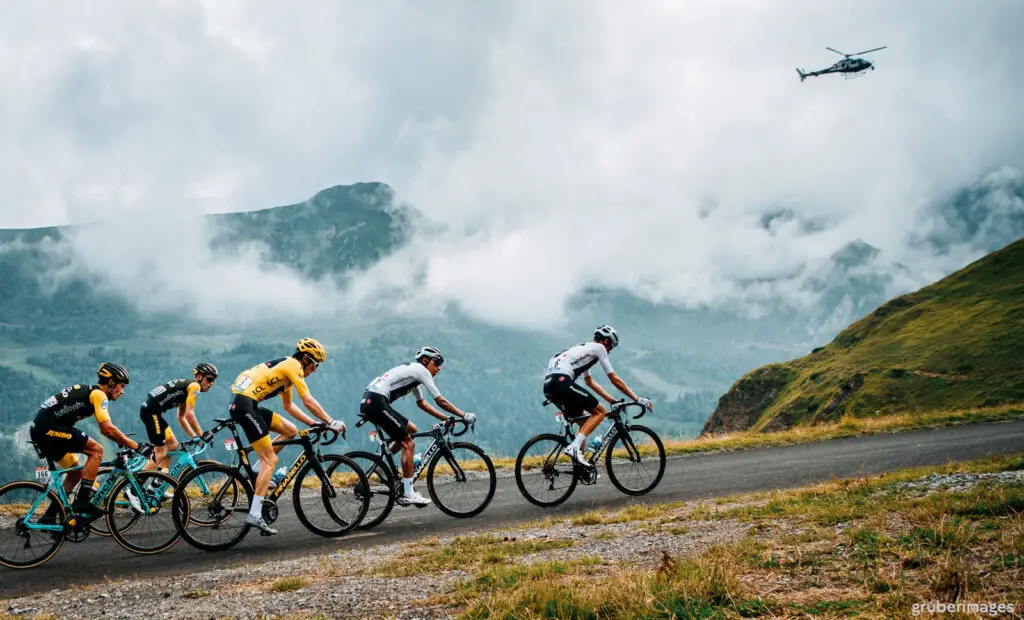How fast can a bike go uphill?
A bike can easily go uphill at speeds of between 3 and 4 mph if the rider shifts to a low enough gear. How fast one can go will also usually depend on the gearing of the bike, the type of bike, the experience of the rider, and how steep the gradient is.
HOW DO I MAKE MY BIKE FASTER UPHILL?
Training for climbing is a popular thing among cyclists that have been climbing and training for it. The most important thing to take into account when trying to become faster uphill include:
- Weight
The weight of the rider coupled with the weight of the bike plays a significant role in how fast you can go up hills. The better the weight-to-power ratio is the easier and faster you can climb hills.
This is why professional tour cyclists are lightweight and ride very light bikes.
- Training
The most effective way of becoming better at hills is by doing it regularly. The more hills you climb the more developed will be your muscles and core which will make you faster and less tired on hills.
As such, it is always advisable to incorporate hills into your training regimen.
- Use the Right Gears

One of the easiest ways to burn out is using the wrong gears on a climb. If you go with too large a gear you will drain your energy faster and experience a huge drop in efficiency which will make you slower.
Always go for the easiest and most efficient gear depending on the terrain and experience you have.
- Pace the Climb
While it can be tempting to start attacking hills and conquer them as fast as you can, this has been shown to make one tire faster and become slower. A better way is to settle in and find the most appropriate gear that does not tire you out but allows for a reasonable speed.
- Nutrition for More Power
If you want to have enough energy for uphill riding you need to ensure you are well-fed and hydrated. Poor fueling will result in tiring quickly and low energy. If you did not fuel up well you can always resort to energy gels for an instant hit
- Adopt Proper Cycling Technique
If you are prone to wasting too much energy on climbs you should maybe change your cycling techniques. Using suboptimal gears or moving too much in the saddle could be costing you too much energy. With a few tweaks, you can reduce your tiredness and conserve energy that you can use to ride faster.
- Ride in a Group

Riding in a group allows you to enjoy several benefits such as drafting similar to what professional bikers riding in a peloton get. If you have a big enough group you can sit behind other people in turns and save between 10-30% of your energy while climbing hills.
- Prepare Well in Advance
You need to prepare by having the right equipment, clothing shoes, and bike to make yourself more aerodynamic which will in turn make you faster. Preparation can include making your bike lighter, wearing sweat-wicking clothing, having a water bottle for hydration, and knowing the route.
COMMON MISTAKES RIDING UPHILLS
While there are some riders that seem to be natural at climbing hills, most people are not natural climbers. However, many people can be trained to become strong and fast climbers by following the above recommendations and avoiding mistakes such as:
- Panic Smashing at the Bottom
This refers to when you go too hard at the bottom of a hill only to become spent halfway up it. The best way to avoid this is to know your limits and when to start ramping up your efforts from easy to moderate and finally to hard in the final part to conquer the hill.
- Overgearing all the Way Up
While you can go faster with the bigger gears, this usually uses more fast-twitch muscle fibers for speed and explosive power. However, these muscles tend to get tired quickly and you could quickly run out of steam halfway up the hill.
If you are attacking a steep ascent the best way to do it is with a low gear and higher cadence which will use slow twitch muscles that are great for endurance.
- Hyperventilating
Fast breathing not only provides your body with more oxygen but also tells your brain what your physiological and mental state is. If you hyperventilate a lot, your brain could get the signal of over-exertion and start telling the body to slow down.
Luckily there are some professional tips for beating hyperventilation that include deep rather than quick breathing and staying positive about abilities and performance capability.

- Under/Over Nutrition
It is critical to always be fuelled up if you are going to be tackling steep climbs. Experts usually recommend nibbling or drinking something every 20 minutes or so if you are commuting or racing on hilly routes.
It is not wise to eat food ten minutes before the hill as it will not help you much. You want some of that fuel in the food to be in your bloodstream a few moments before you tackle the hill hence the twenty-minute recommendation.
- Not Practicing with Hills
Many people desire to be better climbers but they never practice. The thing is the more practice you have with hills the more comfortable you will be climbing them.
HOW FAST DO PRO CYCLISTS GO UPHILL?
Whether you are a beginner or a pro cyclist, the speed you can attain cycling up a hill will be hugely dependent on the gradient of the hill.
It is not uncommon to see pros at the Tour of Flanders walking their bikes up the Koppenberg given that it is cobbled and at some points, its grade is up to 22%. This is only compounded if there is a peloton of riders on a narrow road and an exhausted rider to boot.
Still, most pro cyclists can attain single-digit speed up most hills on the Tour de France races such as Ventoux in the French Alps.
WHAT GEAR FOR AN UPHILL BIKE
The best gear for uphill climbing is the easy gear which is usually low gear. The lowest gear on a bike is typically the largest cog on the cassette and the smallest chainring in the front.
In such a position, pedaling will be easier and a cyclist will be able to pedal uphill with minimal resistance.
DOES CYCLING UP HILLS GET EASIER?
Biking up hills will only become easier if you keep practicing on hills. The more a person climbs hills the less tired they will get on subsequent attempts. By climbing regularly you can work on your technique, stamina, and endurance over time and become a fast climber.
The best way to do this is by incorporating hill routes into your training regimen rather than avoiding them.


